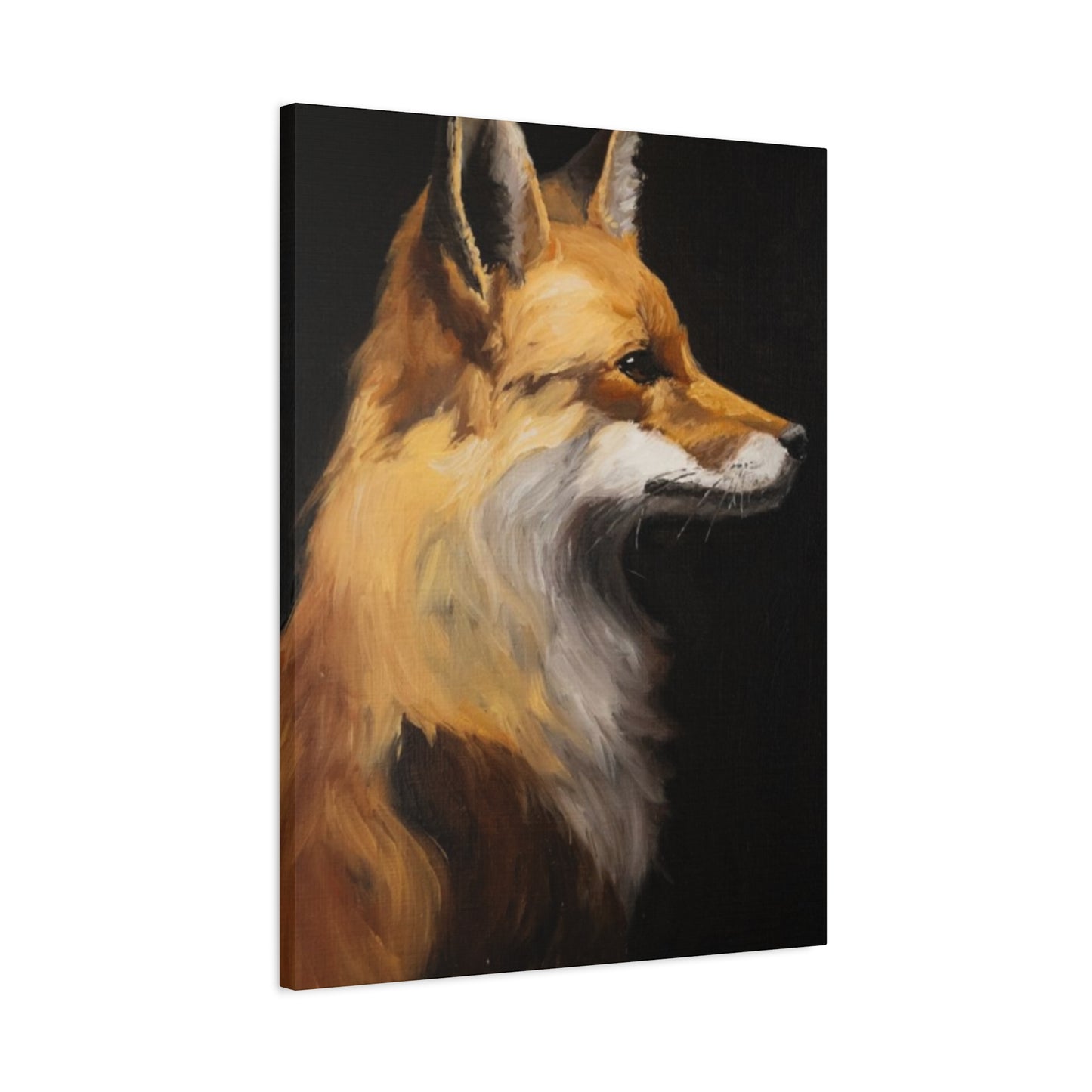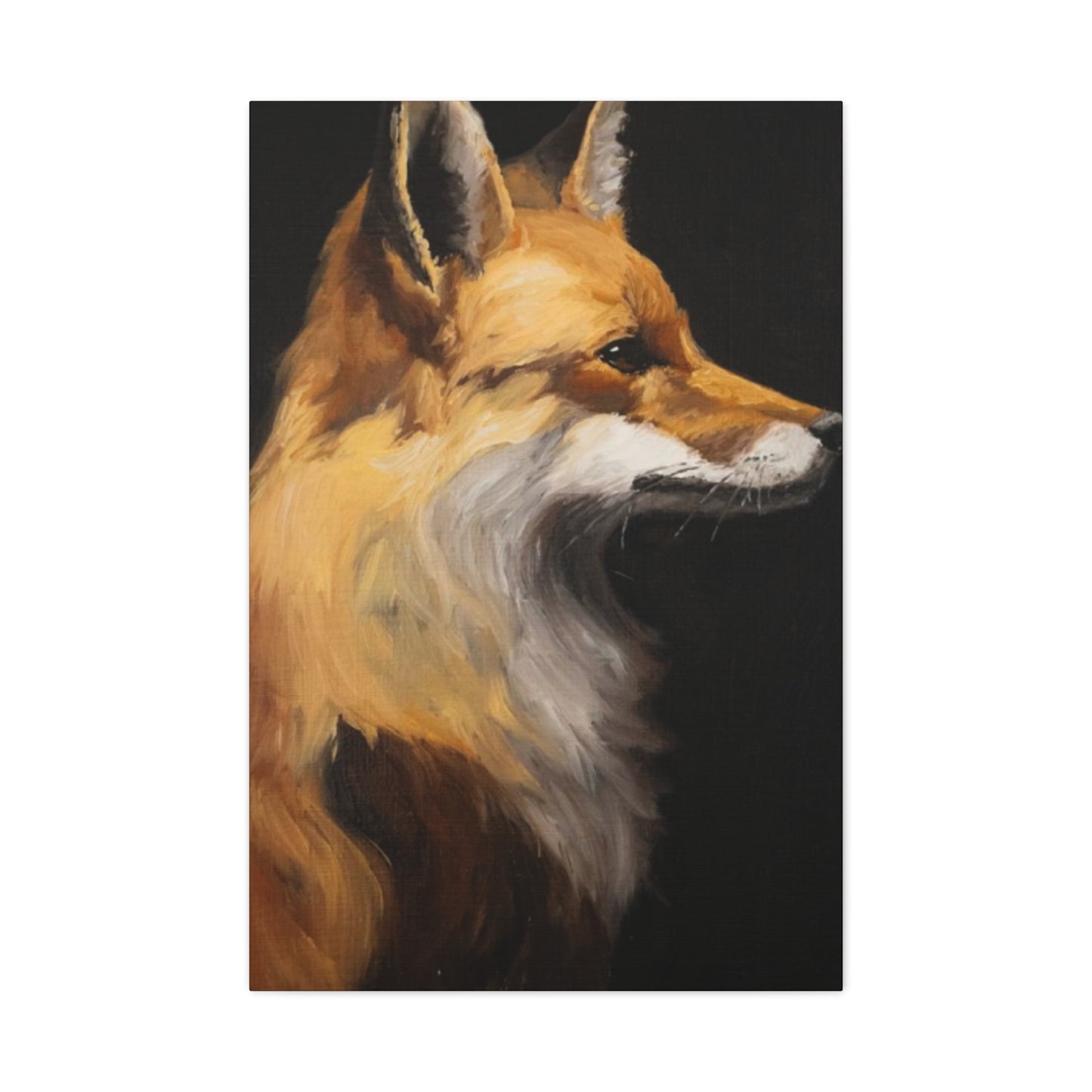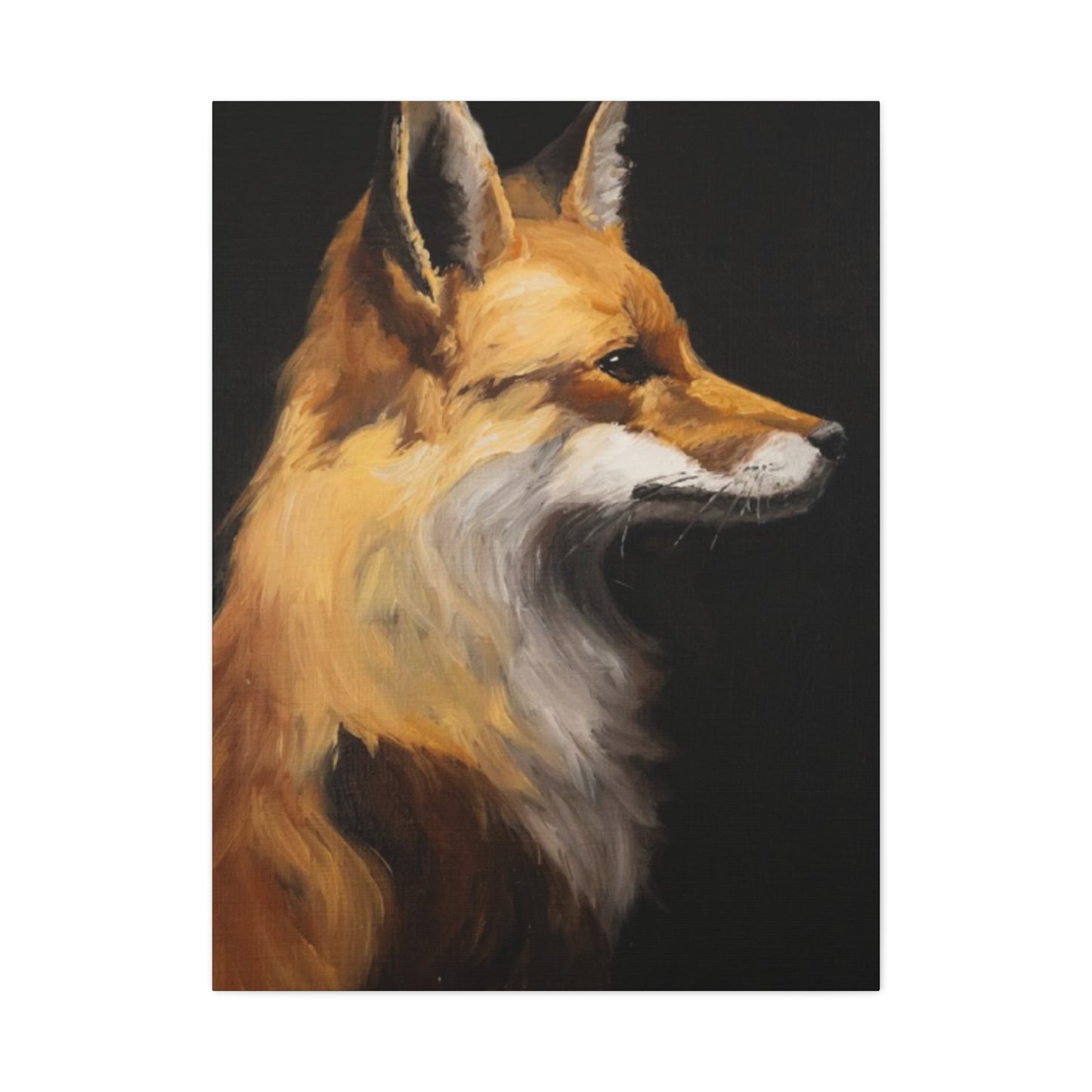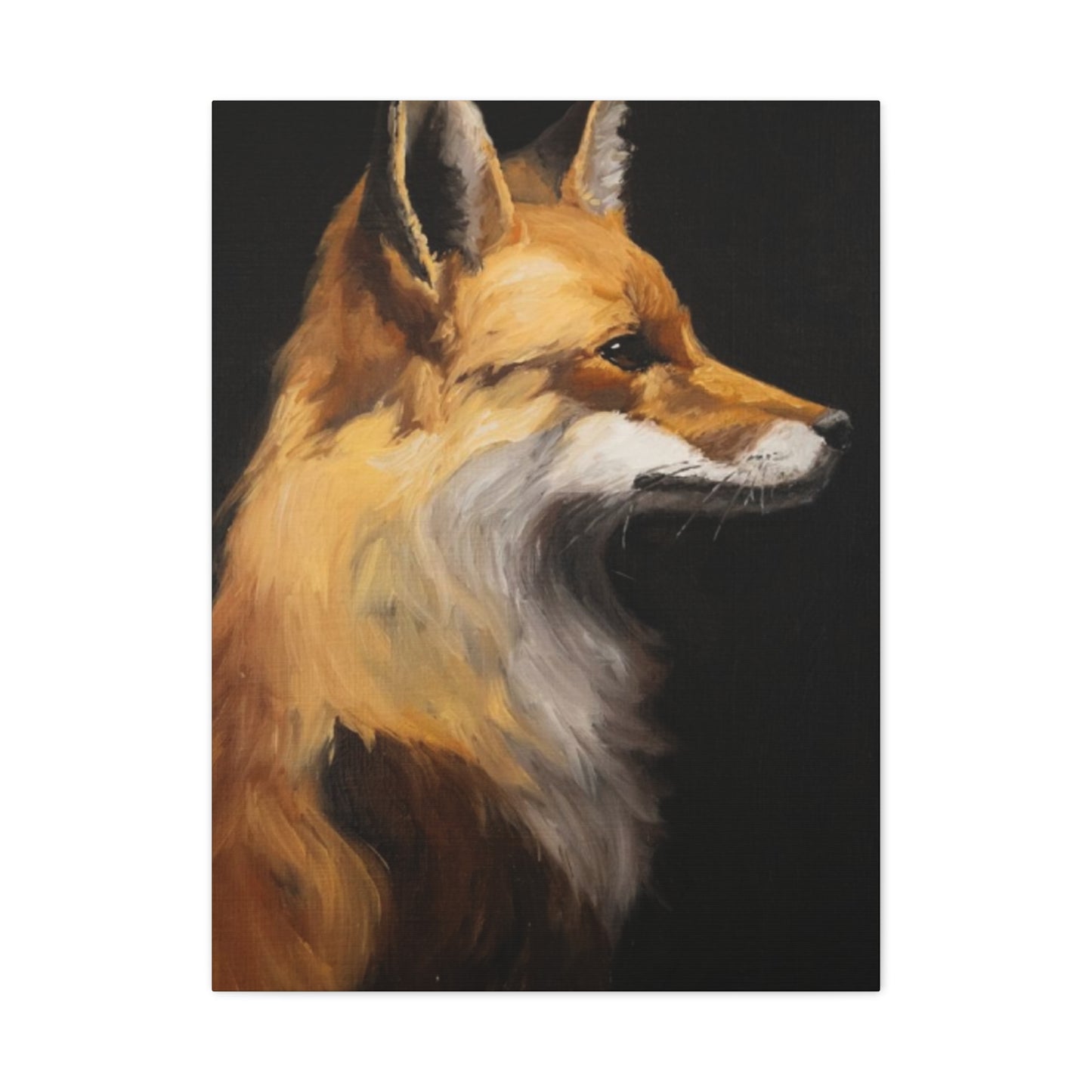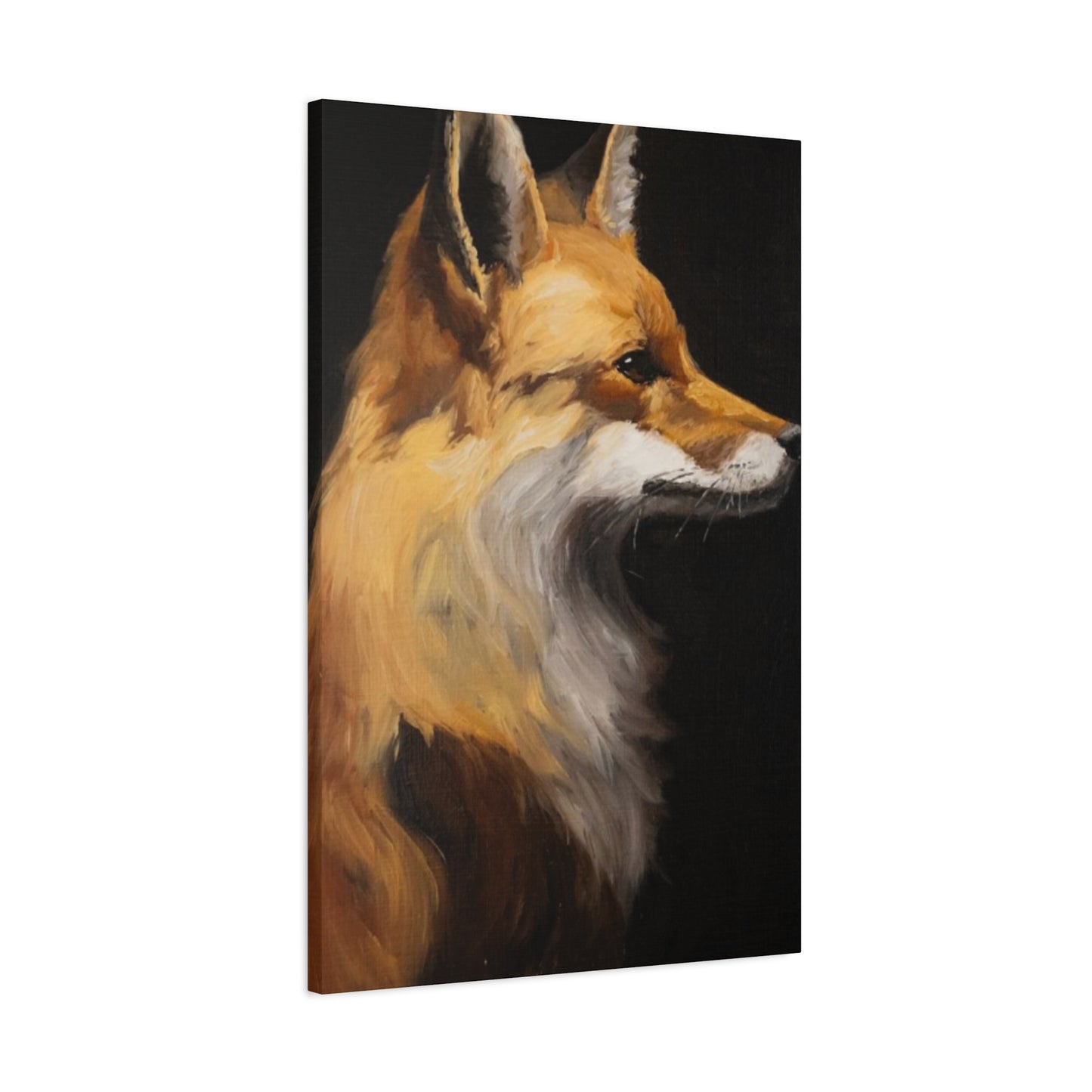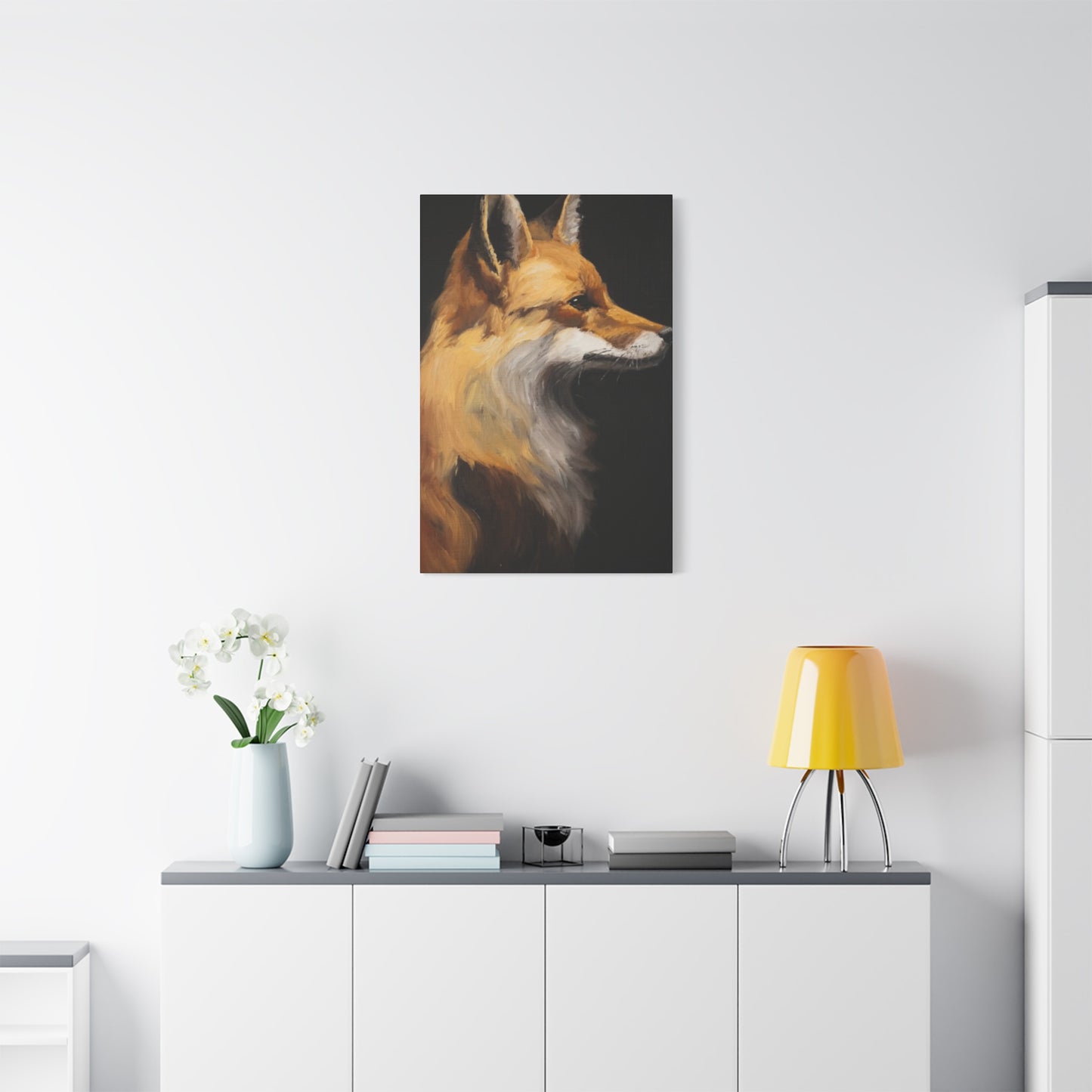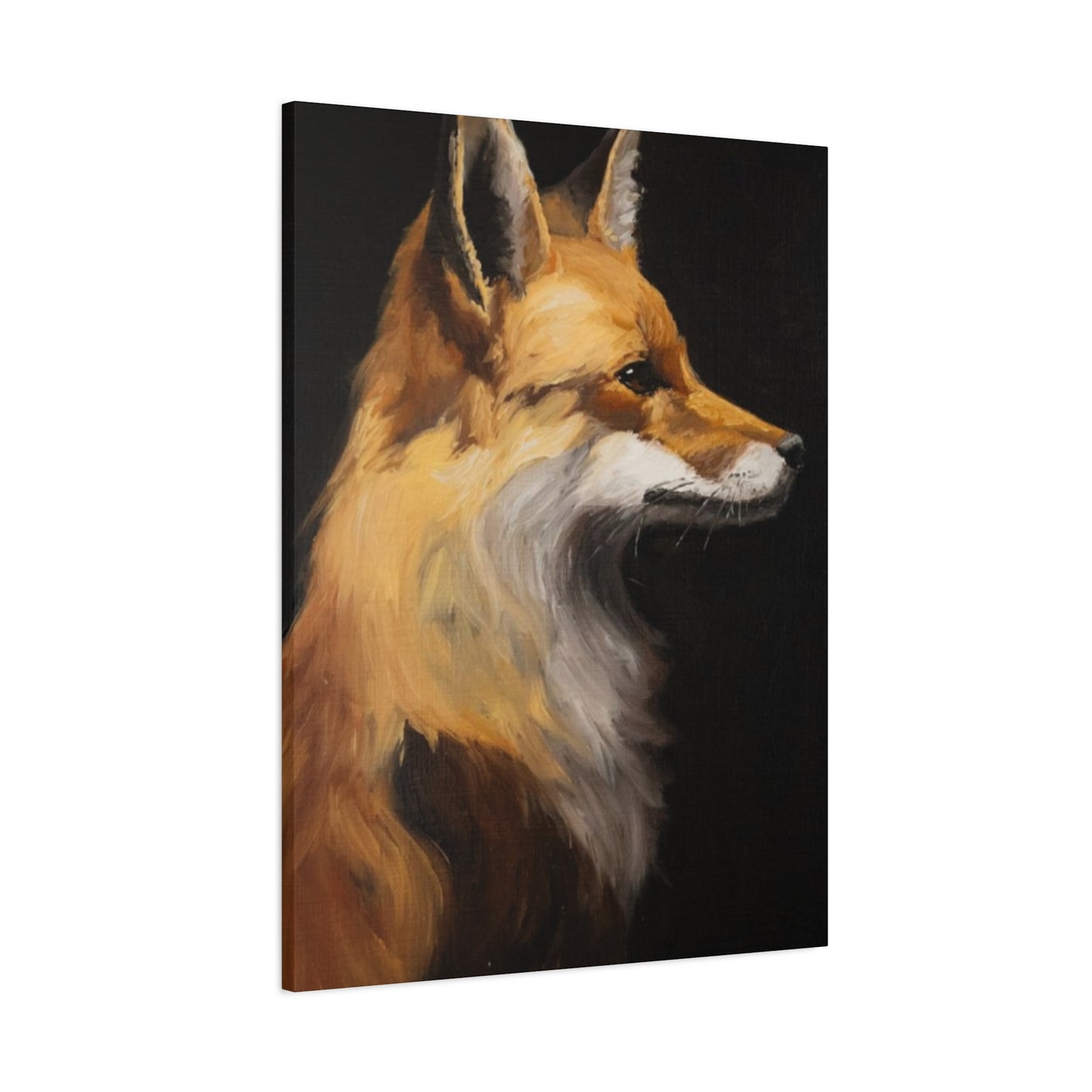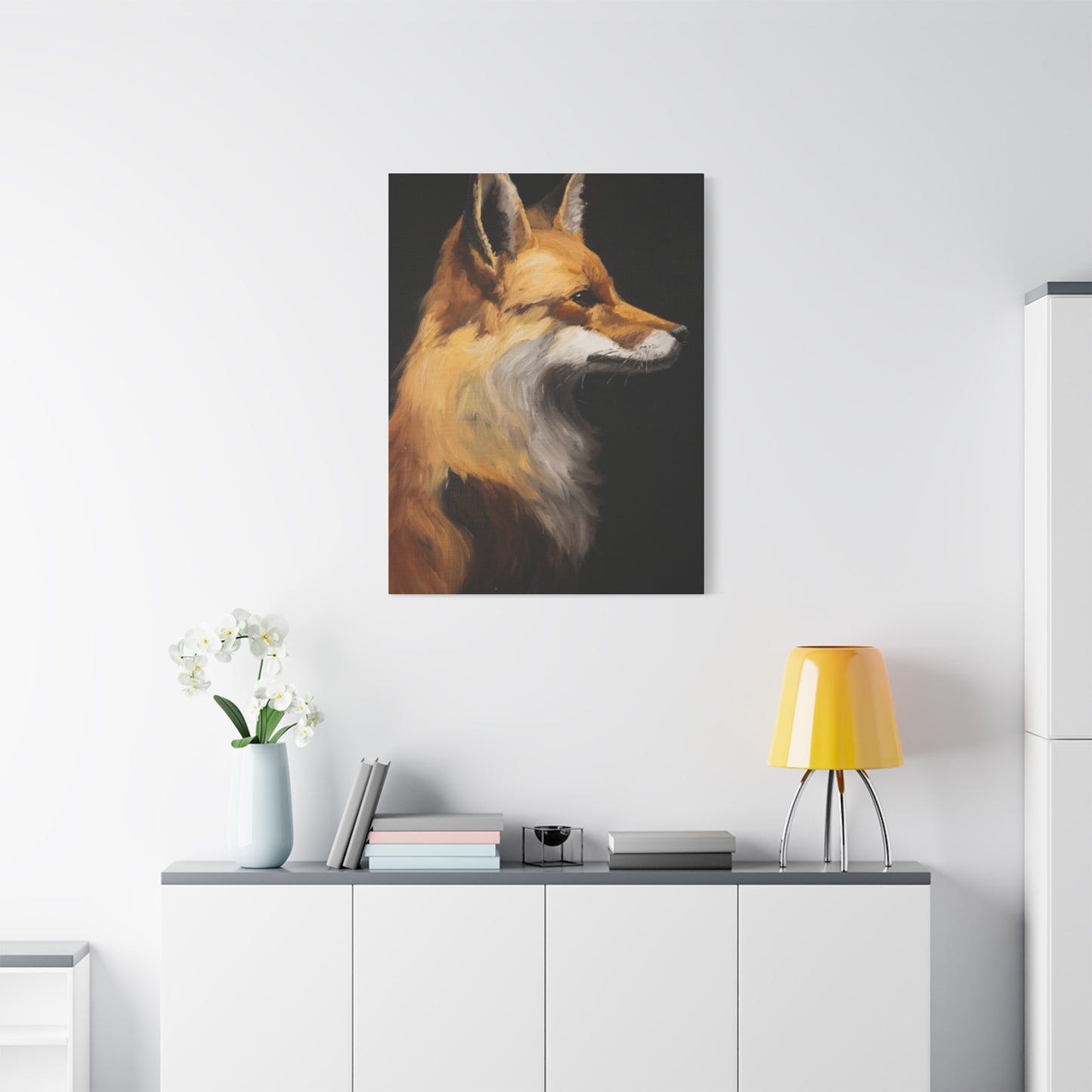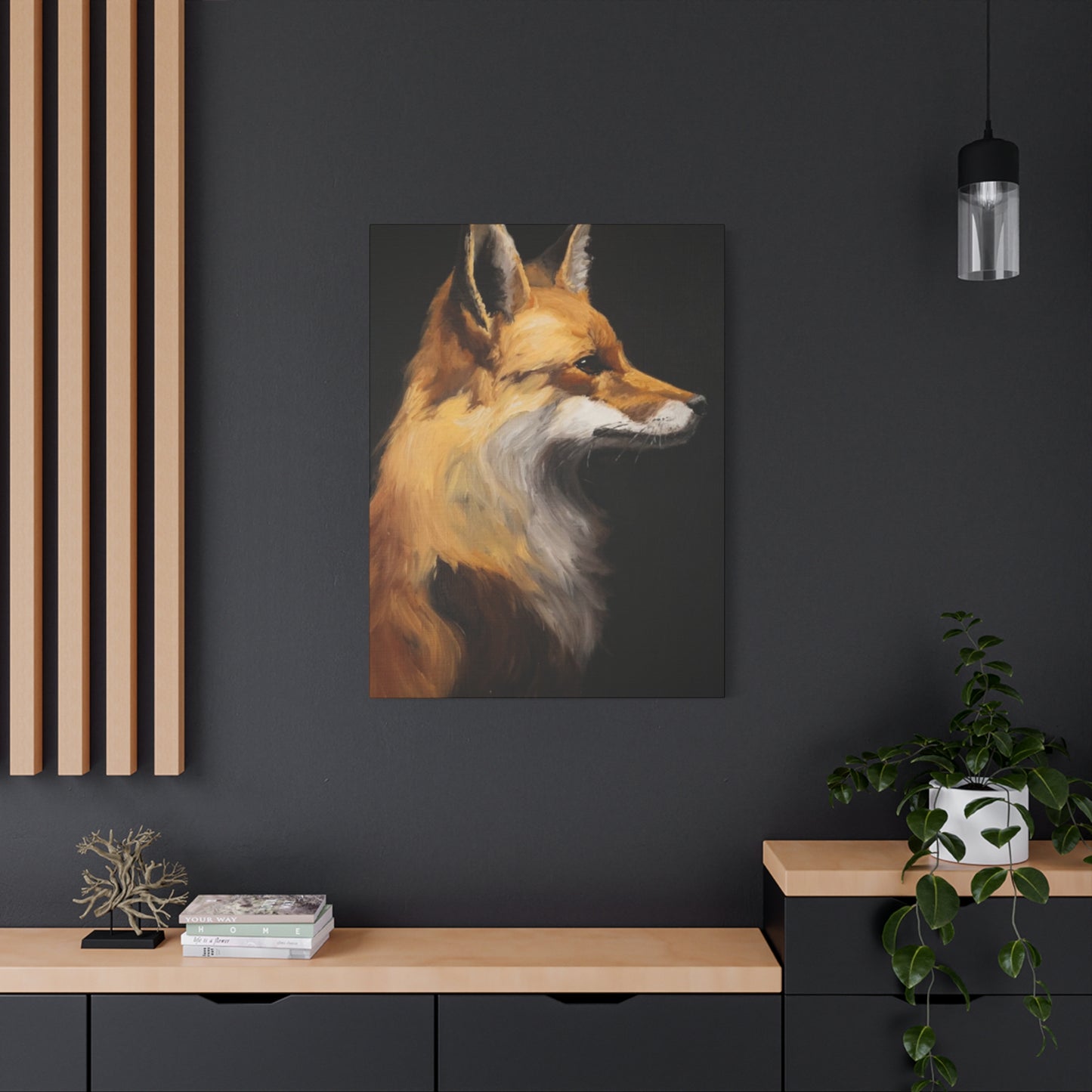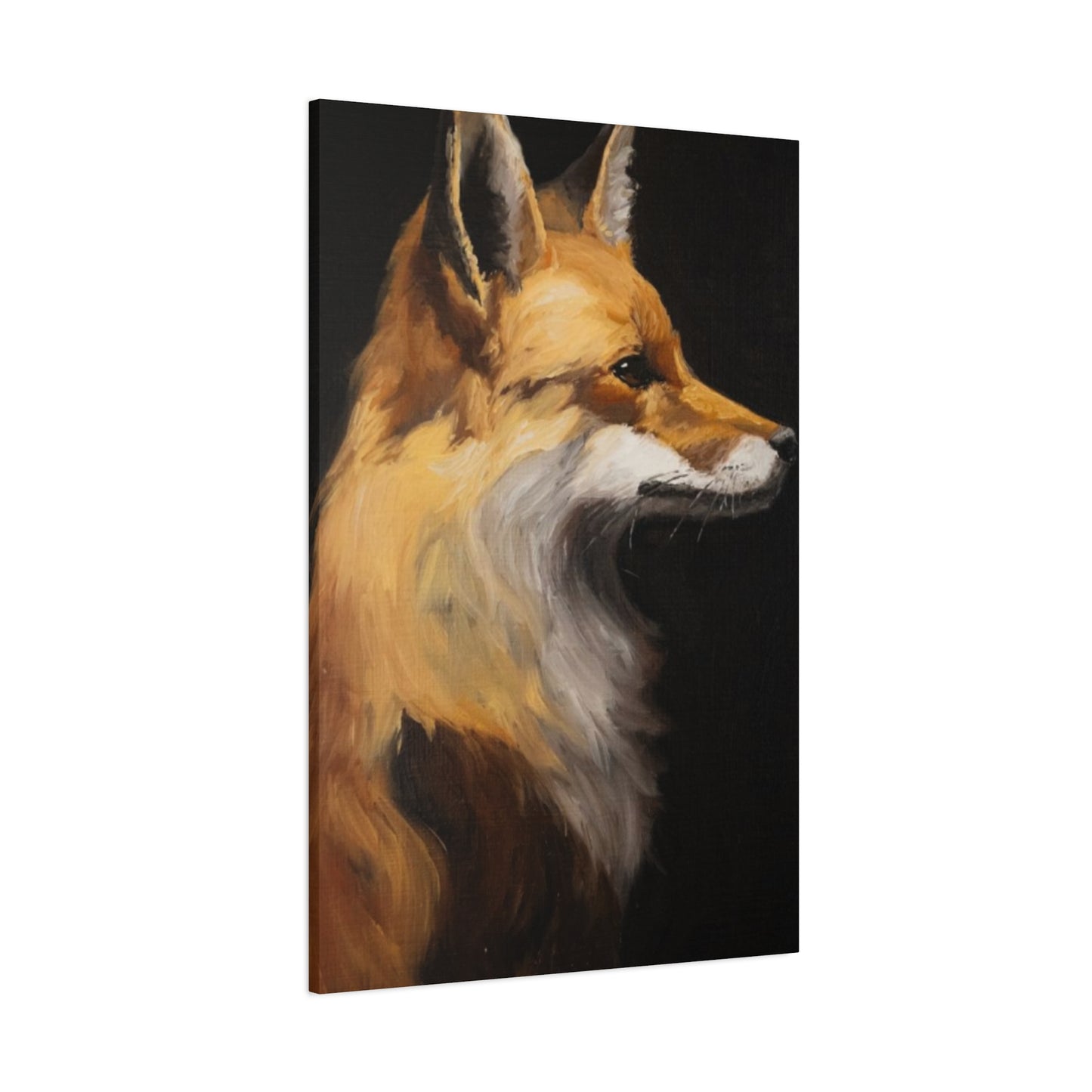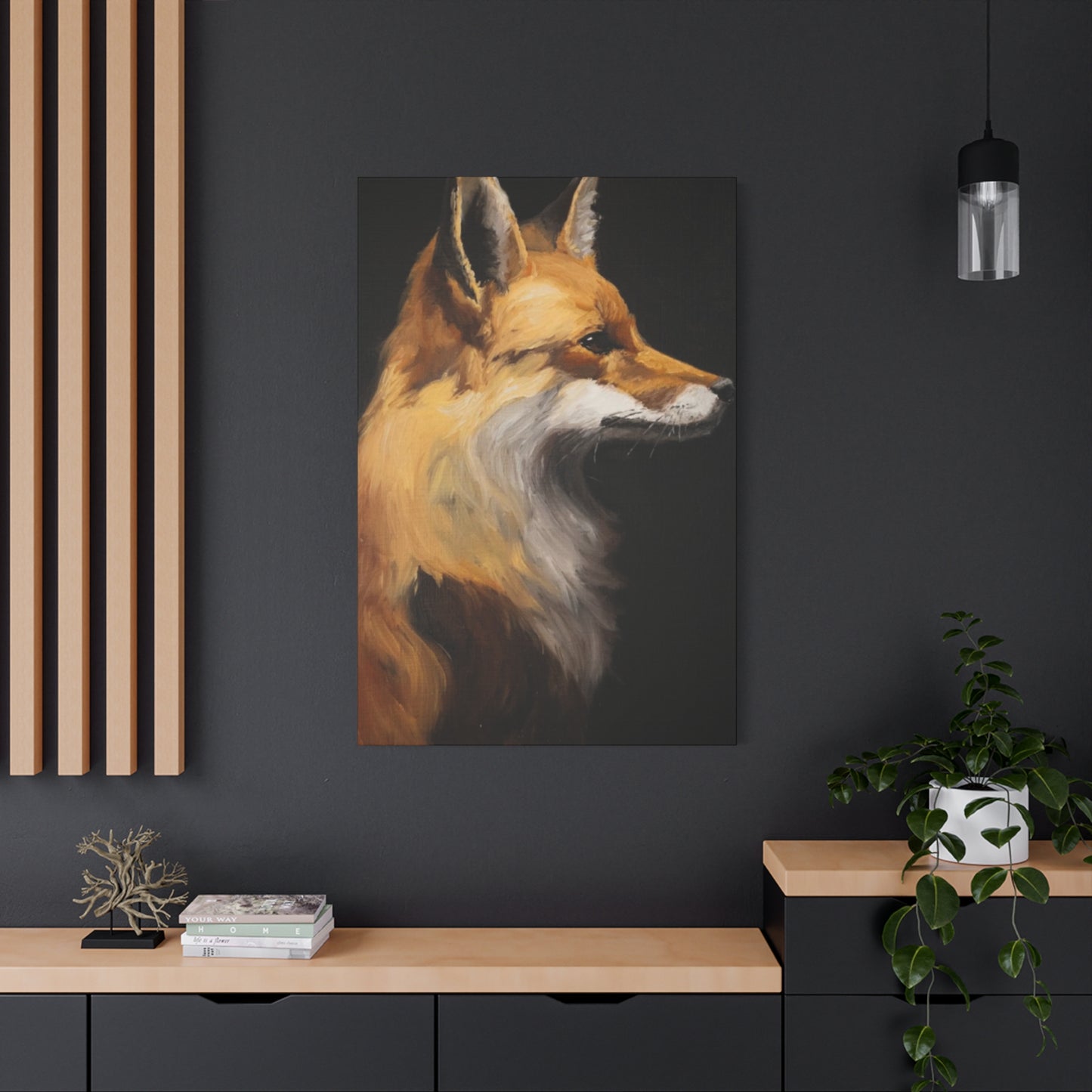Captivating Charm: Red Fox Portrait Wall Art for Every Living Space
The allure of wildlife imagery within interior design has experienced remarkable growth over recent years, with fox-themed artwork emerging as a particularly sought-after choice among homeowners and decorators alike. These striking creatures, with their fiery coats and intelligent expressions, bring an element of untamed elegance to residential and commercial environments. The increasing popularity of fox-themed artwork reflects a broader cultural movement toward reconnecting with natural elements within our increasingly urbanized lifestyles.
Fox imagery carries deep cultural significance across numerous civilizations throughout history. In various traditions, these animals represent wisdom, adaptability, and strategic thinking. Their physical beauty, characterized by luxurious russet fur, piercing amber eyes, and graceful proportions, translates exceptionally well into visual artwork. When captured in portraiture format, these magnificent creatures become more than mere decorative elements—they transform into conversation pieces that reflect the personality and values of those who display them.
Contemporary interior design increasingly embraces biophilic principles, which emphasize the human need for connection with natural environments. Wildlife portraiture satisfies this psychological requirement while maintaining aesthetic sophistication. Fox portraits specifically offer versatility that allows them to complement various design schemes, from rustic farmhouse aesthetics to sleek contemporary minimalism. The neutral tones found in fox imagery—rich reds, warm oranges, creamy whites, and deep blacks—create natural harmony with diverse color palettes commonly used in modern interiors.
The technical execution of fox portraiture has evolved significantly with advances in printing technology and artistic techniques. High-resolution photography and digital illustration methods now capture extraordinary detail, from individual fur strands to the subtle gradations of color within the animal's coat. Traditional painting methods, including oil, acrylic, and watercolor, continue to offer unique textural qualities that digital methods cannot replicate. Mixed media approaches combine various techniques to create dimensional pieces that engage viewers from multiple angles and lighting conditions.
Selecting appropriate wildlife artwork requires consideration of multiple factors beyond simple aesthetic preference. Scale plays a crucial role in determining how effectively a piece functions within a given space. Oversized portraits create dramatic statements in expansive rooms, while smaller works suit intimate areas or contribute to gallery wall arrangements. The orientation of the subject—whether facing forward, in profile, or captured mid-movement—affects the energy and directionality of the composition. Forward-facing portraits create direct engagement with viewers, while profile views suggest contemplation and grace.
The emotional resonance of wildlife portraiture stems from our innate connection to the natural world. Even individuals living in urban environments harbor deep-seated responses to animal imagery, rooted in our evolutionary history. Foxes, in particular, evoke complex emotional responses due to their dual nature in human consciousness—simultaneously wild and somehow familiar, mysterious yet approachable. This cognitive tension creates visual interest that prevents artwork from becoming background noise within living spaces.
Material selection significantly impacts both the aesthetic quality and longevity of fox portraiture. Canvas prints offer traditional artistic appeal with texture that adds depth to imagery. Metal prints provide contemporary edge with vibrant colors and remarkable durability. Wood-mounted prints introduce organic warmth that enhances nature-themed artwork. Acrylic mounting creates luminous quality through light interaction with translucent layers. Each substrate brings distinct characteristics that should align with both the artistic style and the intended display environment.
Aesthetic Excellence: Incorporating Russet-Coated Wildlife Into Living Environments
Integration of fox-themed artwork into residential spaces requires thoughtful consideration of existing design elements to achieve cohesive results. The process begins with analyzing current color schemes, furniture styles, and decorative accessories already present within target rooms. Fox portraits featuring predominantly warm tones naturally complement spaces with similar color temperatures—think caramel leather furnishings, honey-toned wood floors, and cream-colored textiles. Conversely, pieces emphasizing cooler elements within fox imagery, such as winter scenes or blue-toned backgrounds, harmonize beautifully with spaces featuring gray, navy, or cool beige palettes.
Creating visual balance involves distributing visual weight appropriately throughout a room. Large-scale fox portraits carry substantial visual weight, necessitating careful placement to avoid overwhelming smaller spaces. In spacious rooms with high ceilings, oversized wildlife portraiture fills vertical space effectively while anchoring seating arrangements or dining areas. Smaller fox portraits work beautifully as part of curated collections, where multiple pieces of varying sizes create dynamic visual interest without dominating the environment.
The concept of focal points plays essential roles in interior design, and strategically placed fox artwork serves this function admirably. Upon entering a room, the human eye naturally seeks resting points—areas of visual interest that anchor attention. A striking fox portrait positioned opposite entry points captures attention immediately, setting the tone for the entire space. This technique works particularly well in living rooms, where artwork above sofas creates natural focal points, or in dining rooms, where pieces centered on main walls draw gatherings together visually.
Layering represents another sophisticated approach to incorporating fox portraiture. Rather than isolating artwork on bare walls, layering involves surrounding pieces with complementary elements that enhance their impact. This might include positioning fox portraits above console tables styled with natural objects like branches, stones, or botanical elements. Alternatively, artwork can be flanked by wall-mounted shelving displaying nature-inspired accessories—ceramic animals, collected feathers, or botanical prints. These supportive elements reinforce the wildlife theme while adding dimensional interest.
Texture coordination elevates fox portraiture from simple wall decoration to integrated design element. Since fox imagery naturally includes various textures—soft fur, natural backgrounds, environmental details—surrounding decor should echo these textural qualities. Plush throw pillows in velvet or faux fur fabrics relate to the fox's luxurious coat. Rough-hewn wood furniture connects with natural habitat elements often included in wildlife compositions. Woven baskets, jute rugs, and linen draperies all contribute textural diversity that complements rather than competes with the artwork's inherent qualities.
Lighting dramatically affects how fox portraiture appears and how effectively it functions within spaces. Natural light brings out authentic colors and details but requires consideration of direct sunlight exposure, which can fade pigments over time. Positioning fox portraits perpendicular to windows rather than directly opposite prevents problematic glare while allowing ambient illumination. Artificial lighting options include picture lights mounted directly above frames, track lighting directed toward artwork, or accent lamps positioned nearby. Adjustable lighting allows flexibility to modify ambiance according to time of day or specific occasions.
Scale relationships between artwork and surrounding furniture require careful calibration. Interior designers typically recommend that artwork spanning furniture pieces should measure approximately two-thirds to three-quarters the furniture width. For fox portraits hung above sofas, this guideline ensures visual harmony rather than awkward proportions. When floating artwork on open walls without furniture references, human scale becomes the relevant consideration—positioning centers approximately 57 to 60 inches from the floor aligns with average eye level, creating comfortable viewing experiences.
Color extraction provides a sophisticated method for creating cohesive room designs around fox portraiture. This technique involves identifying secondary colors within artwork and repeating them throughout the space via accessories, textiles, and accent pieces. A fox portrait featuring autumn forest backgrounds might inspire incorporation of moss green throw pillows, rust-colored ceramics, and golden-hued accent furniture. This approach creates subtle visual threads connecting disparate elements into unified compositions.
Cultural Significance: Deeper Meanings Within Vulpine Imagery
Throughout human history, foxes have occupied prominent positions in mythology, folklore, and cultural narratives across diverse civilizations. Understanding these symbolic associations adds depth to appreciation of fox portraiture, transforming decorative choices into meaningful personal statements. In Japanese tradition, fox spirits called kitsune possess intelligence, magical abilities, and longevity. As these supernatural beings age, they develop additional tails, with nine-tailed foxes representing ultimate wisdom and power. This rich mythological background imbues Japanese fox artwork with layers of meaning extending far beyond aesthetic considerations.
Celtic traditions associate foxes with cunning intelligence and strategic thinking. In these cultural contexts, fox imagery represents the ability to navigate complex situations through mental agility rather than physical strength. For individuals valuing intellectual pursuits or working in fields requiring strategic planning, fox portraits may resonate as personal totems representing professional identity. This symbolic dimension transforms artwork from mere decoration into reflection of personal values and aspirations.
Native American traditions across various tribal nations include fox figures in creation stories and teaching tales. Depending on specific cultural contexts, foxes might represent wisdom, trickster energy, adaptability, or observational skills. The specific symbolic meanings vary considerably across different tribal traditions, preventing broad generalizations. However, the consistent presence of fox figures across Indigenous narratives throughout North America demonstrates the cultural significance these animals held for peoples living in close connection with natural environments.
European folklore presents foxes with somewhat ambivalent characterization—admiring their intelligence while viewing their cunning with suspicion. Medieval bestiaries described foxes employing elaborate stratagems to capture prey, sometimes attributing almost supernatural cleverness to their hunting methods. Aesop's fables feature fox characters prominently, using their behavior to illustrate moral lessons about intelligence, pride, and deception. This complex cultural legacy means European fox imagery carries nuanced associations that may vary based on specific artistic treatment and contextual presentation.
Contemporary symbolic interpretations often emphasize adaptability as the fox's primary metaphorical significance. As human-modified landscapes increasingly fragment natural habitats, foxes demonstrate remarkable flexibility, successfully inhabiting urban, suburban, and rural environments. This adaptability resonates with modern audiences navigating rapidly changing social, technological, and professional landscapes. Displaying fox portraiture might represent personal identification with resilience, flexibility, and the ability to thrive across diverse circumstances.
The solitary nature of many fox species provides another layer of symbolic meaning. Unlike pack animals that depend on group dynamics, foxes typically hunt and live independently or in small family units. For individuals who value independence, self-sufficiency, or solitary pursuits, fox imagery may reflect these personality traits. This aspect makes fox portraits particularly meaningful for home office spaces, creative studios, or personal retreats designed for individual reflection and work.
Color symbolism intersects with animal symbolism in fox portraiture, creating compound meanings. The characteristic red coat of red foxes associates with passion, energy, vitality, and courage in color psychology. White variations, such as Arctic foxes or leucistic individuals, suggest purity, clarity, and spiritual illumination. Black pigmentation, seen in melanistic foxes or shadowed portions of standard coloring, brings associations with mystery, elegance, and protective energy. Awareness of these color-based symbolic dimensions allows intentional selection of fox portraits aligned with desired emotional or psychological resonances.
Seasonal associations embedded in fox imagery contribute additional symbolic layers. Fox portraits featuring winter scenes connect with themes of survival, preparation, and finding beauty in challenging circumstances. Spring imagery emphasizes renewal, playfulness, and family bonds as vixens raise kits. Autumn representations suggest harvest, abundance, and the cyclical nature of existence. Summer portrayals evoke warmth, vitality, and peak life expression. These seasonal associations allow selection of fox artwork that resonates with personal connection to specific times of year or the qualities they represent.
The directional gaze of portrayed foxes carries psychological impact and symbolic suggestion. Subjects looking directly at viewers create engagement and connection, suggesting communication or recognition. Profile views emphasize grace, dignity, and contemplative qualities. Backward glances introduce tension and narrative suggestion, implying awareness of unseen elements or divided attention. Upward gazes suggest aspiration, wonder, or connection with transcendent dimensions. Awareness of these subtle directional cues enables selection of portraits whose specific compositions align with intended emotional impacts.
Display Excellence: Professional Presentation Methods for Wildlife Artwork
Proper framing fundamentally impacts how effectively fox portraiture functions within interior spaces. Beyond simple protection of artwork, frames serve as transitional elements between image content and surrounding environment. Frame selection requires balancing multiple considerations: complementing the artwork itself, harmonizing with room decor, and respecting the artistic style of the piece. Understanding framing principles empowers artwork owners to make informed decisions that maximize visual impact while ensuring long-term preservation.
Material selection represents the primary framing decision. Wood frames remain classic choices, offering warmth and natural appeal particularly suited to wildlife imagery. Species selection affects appearance significantly—light woods like maple or ash provide contemporary feel, while darker woods such as walnut or mahogany suggest traditional elegance. Natural wood grain adds organic texture connecting visually with nature-themed content. Metal frames, particularly in matte black or brushed finishes, deliver modern aesthetic especially appropriate for contemporary interiors or minimalist design schemes.
Frame width proportions require consideration relative to image size and visual weight. Slender frames, typically under one inch in width, suit smaller pieces or contemporary aesthetics emphasizing the artwork itself. Medium-width frames, ranging from one to three inches, provide versatile options working across various styles and sizes. Wide frames, exceeding three inches, create substantial presence appropriate for large-scale pieces or when intentionally establishing artwork as significant focal points. As general guidance, visually complex or highly detailed images benefit from simpler, narrower frames preventing competition, while simpler compositions can support more elaborate frame treatments.
Matting serves multiple functions beyond aesthetic enhancement. Physically, mats create space between artwork and glazing, preventing moisture accumulation and allowing air circulation. Visually, mats provide resting space for eyes, preventing surrounding walls from overwhelming image content. Standard white or off-white matting offers neutral options suiting most circumstances, while colored mats can extract and emphasize specific tones within artwork. Double or triple matting, using multiple stacked mat layers in coordinating colors, adds dimensional elegance appropriate for particularly special pieces.
Mat width proportions follow design conventions developed over centuries of artistic display. Balanced matting uses equal widths on all sides, creating formal, stable appearance. Weighted matting employs slightly wider bottom margins—typically an additional half-inch to inch—which counteracts optical illusion making equal borders appear bottom-heavy. This technique, drawn from traditional picture framing practices, creates subconsciously more comfortable viewing experiences. Mat width should scale with overall piece size—smaller works typically use two to three-inch mats, while larger pieces may employ four-inch or wider surrounds.
Glazing choices significantly impact both artwork preservation and visual experience. Standard glass provides basic protection at economical cost but produces glare under certain lighting conditions and offers minimal UV filtration. Acrylic glazing, lighter and shatter-resistant, suits households with children or seismic regions but scratches more easily than glass. Museum glass, the premium option, virtually eliminates glare while providing maximum UV protection, though at substantially higher cost. Conservation acrylic combines UV protection with lightweight durability. The appropriate glazing choice balances budget constraints with preservation priorities and practical household considerations.
Frame color relationships with artwork demand thoughtful analysis. Frames matching dominant colors within images create cohesive integration but risk monotony if insufficiently contrasted. Complementary frame colors drawn from secondary image tones generate visual interest while maintaining harmony. Neutral frame colors—blacks, whites, grays, natural woods—offer safe versatility but may not maximize visual impact. When uncertain, examining the artwork's darkest and lightest values helps identify frame colors that will neither wash out nor overwhelm the composition.
Conservation framing practices preserve artwork quality over decades. Acid-free materials throughout—mats, backing boards, mounting methods—prevent chemical deterioration of prints and papers. Protective spacers maintain air gaps between artwork and glazing. UV-filtering glazing slows light-induced fading. Sealed backing prevents environmental contaminants from entering frame packages. While conservation framing increases initial investment, it protects artwork value and appearance, particularly important for original works or limited edition prints.
Custom framing versus ready-made options represents a cost-versus-personalization calculation. Ready-made frames offer economical solutions for standard sizes, with immediate availability and lower price points. However, size options remain limited to common dimensions, and design choices may not perfectly suit specific artwork or decor. Custom framing provides unlimited size and design possibilities, professional consultation, and quality materials but requires longer production times and higher investment. For particularly meaningful pieces, unique sizes, or specific design visions, custom framing typically delivers superior results justifying additional costs.
Hardware selection ensures secure, level mounting. Wire hanging systems attached to frame backs offer adjustability but may allow slight tilting over time. D-rings positioned at frame sides with hanging wire create secure, level suspension. Heavy pieces require substantial hardware rated for appropriate weights—using inadequate hardware risks artwork damage from falls. Wall anchors suited to specific wall construction types prevent mounting failures. Professional installation services eliminate guesswork for valuable or heavy pieces, ensuring secure mounting that protects both artwork and walls.
Contemporary Aesthetics: Wildlife Portraiture Within Current Design Movements
Modern interior design philosophy increasingly embraces organic elements as counterpoint to technology-saturated contemporary life. Fox portraiture fits seamlessly within this movement, bringing natural world references into living spaces dominated by manufactured materials and digital screens. The clean lines and simplified forms characterizing modern aesthetics complement wildlife portraiture when pieces are selected and displayed with appropriate restraint. Rather than cluttering spaces with excessive decoration, strategically placed fox portraits serve as carefully chosen accent elements within otherwise streamlined environments.
Minimalist design principles, emphasizing "less is more" philosophy, initially might seem incompatible with decorative artwork. However, minimalism opposes clutter and excess rather than decoration itself. Within minimalist contexts, fox portraiture functions as intentional design element rather than arbitrary addition. A single striking fox portrait on an otherwise bare wall creates powerful visual statement without violating minimalist principles. The key lies in selectivity—choosing exceptional pieces and displaying them with generous surrounding space, allowing each work to breathe and command full attention.
Scandinavian design traditions particularly harmonize with fox imagery due to shared Northern European cultural roots. The fox species native to Nordic regions hold cultural significance within these traditions. Scandinavian design characteristics—natural materials, neutral colors with accent tones, functional simplicity—complement fox portraiture naturally. Light wood frames, white or natural mats, and simple presentation styles align with Nordic aesthetic values while the subject matter reinforces connection to Northern landscapes and wildlife.
Industrial design aesthetics, characterized by exposed structural elements, raw materials, and urban edge, surprisingly accommodate wildlife portraiture effectively. The juxtaposition between refined natural subjects and rough industrial contexts creates compelling visual tension. Black metal frames enhance this aesthetic, while exposed brick or concrete walls provide dramatic backgrounds for fox portraits. This unexpected pairing demonstrates the versatility of wildlife imagery across diverse design approaches when executed with intentionality.
Mid-century modern design, experiencing ongoing revival, pairs beautifully with wildlife portraiture through shared emphasis on natural forms and organic shapes. The warm wood tones and clean lines characteristic of mid-century furniture create ideal settings for fox artwork. This design era's appreciation for bringing natural elements indoors aligns perfectly with wildlife art selection. Teak or walnut frames echo furniture materials, creating subtle visual connections throughout spaces styled with mid-century influences.
Transitional design, blending traditional and contemporary elements, accommodates fox portraiture with particular ease. This approach's inherent flexibility allows wildlife artwork to bridge stylistic divides. A traditional oil painting of a fox in ornate gilded frame might anchor a room that otherwise features modern furniture, while contemporary photographic fox portraits complement spaces with traditional architectural details. This versatility makes fox imagery valuable tool for creating cohesive aesthetics across homes containing mixed stylistic elements.
Bohemian and eclectic design approaches celebrate collected, layered, personalized spaces. Within these contexts, fox portraiture contributes to carefully curated disorder that characterizes the style. Mixed with global textiles, vintage finds, and varied artistic media, fox portraits become part of visual narratives reflecting individual experiences and interests. The key to successful bohemian styling involves intentionality despite apparent spontaneity—elements should relate through color, theme, or scale even when diverse in style.
Farmhouse and rustic design movements show obvious compatibility with wildlife imagery. These styles already emphasize natural materials, earth tones, and countryside references, making fox portraiture natural stylistic extensions. Distressed wood frames enhance rustic appeal, while neutral palette fox portraits reinforce the aesthetic's characteristic color schemes. Combining fox artwork with reclaimed wood furniture, vintage accessories, and natural fiber textiles creates cohesive country-inspired environments.
Contemporary maximalism, emerging as countermovement to minimalist dominance, embraces abundance, pattern, color, and layered decoration. Within maximalist contexts, fox portraiture contributes to deliberately rich visual environments. Multiple wildlife pieces might be displayed together, mixed with botanical prints, abstract works, and varied artistic media. Boldly colored fox portraits or pieces with complex backgrounds particularly suit maximalist sensibilities. The challenge lies in creating intentional visual richness rather than chaotic clutter—a distinction requiring careful curation.
Biophilic design explicitly prioritizes human connection with natural environments through interior design choices. This evidence-based approach demonstrates that nature imagery, natural materials, and organic forms improve psychological wellbeing and cognitive function. Fox portraiture serves biophilic design objectives directly by maintaining visual connection to wildlife within built environments. When combined with living plants, natural light optimization, and organic material selection, wildlife artwork contributes to spaces supporting human health and happiness.
Strategic Positioning: Optimal Locations for Vulpine Wall Decorations
Living rooms function as primary social spaces within homes, making them natural candidates for displaying meaningful artwork. Fox portraits positioned above seating arrangements create focal points that anchor conversation areas while providing visual interest for gathered guests. Scale considerations prove particularly important in living rooms, where generous wall space often accommodates larger pieces. A statement-sized fox portrait centered above a sofa establishes clear design intention, while smaller works might form gallery walls incorporating multiple related pieces.
Entryways and foyers establish first impressions for residents and visitors alike, making them strategic locations for distinctive artwork. A striking fox portrait immediately visible upon entry sets tone for entire home aesthetic. These transitional spaces typically feature limited square footage but may include significant vertical wall space, creating ideal conditions for portrait-oriented artwork. Since people move through entryways rather than lingering, artwork in these locations benefits from bold visual impact that registers quickly.
Bedroom environments offer opportunities for more personal, intimate artwork selection. Since bedrooms serve private rather than public functions, the displayed artwork can reflect individual preferences without concern for broader audience appeal. Smaller, quieter fox portraits positioned opposite beds or above dressers provide gentle visual interest without creating overstimulation in spaces meant for rest. The calming presence of nature imagery supports relaxation and stress reduction, enhancing bedroom functionality as restorative environment.
Dining rooms benefit from artwork that stimulates conversation without dominating attention during meals. Fox portraits featuring interesting compositions or unusual perspectives provide talking points while maintaining appropriate aesthetic balance. These formal spaces often accommodate symmetrical arrangements, such as matching fox portraits flanking buffets or sideboards. The relatively controlled lighting typical of dining rooms allows precise illumination of artwork, enhancing visual impact during evening dining experiences.
Home offices increasingly demand thoughtful design as remote work becomes prevalent. Fox imagery carries particularly appropriate symbolism for work environments—representing intelligence, adaptability, and strategic thinking. Positioning fox portraits within sightlines from desk positions provides brief mental respites during intensive work sessions, the brief visual breaks supporting sustained concentration. The nature connection offered by wildlife imagery combats the isolation and artificial environment of indoor workspace.
Kitchen spaces traditionally receive less attention regarding artwork placement, yet cooking and gathering spaces offer unique opportunities for creative display. Smaller fox prints in protected frames can accent areas above coffee stations or breakfast nooks. Since kitchens experience temperature fluctuations, humidity, and cooking residue, artwork requires appropriate protection through sealed frames and strategic positioning away from direct steam or heat exposure. The resulting challenge justifies extra consideration for successfully incorporating artwork into these functional spaces.
Stairway walls present unique opportunities and challenges for artwork display. The ascending or descending sightlines create dynamic viewing experiences as people move through space. Gallery walls featuring multiple fox portraits at varied heights can follow stair angles, creating visually engaging installations. Single large pieces positioned at stair landings provide destinations for ascending views. The vertical space of stairways often exceeds other home areas, accommodating oversized pieces that might overwhelm standard rooms.
Bathroom artwork remains underutilized despite these spaces' importance in daily routines. Smaller fox portraits add unexpected personality to powder rooms and guest bathrooms. Humidity concerns require appropriate protection through sealed frames and strategic placement away from direct shower or bath steam. The privacy of bathroom spaces allows playful or whimsical approaches to fox imagery that might not suit more public areas.
Library or reading nooks benefit from thoughtfully chosen artwork that enhances contemplative atmosphere. Smaller fox portraits positioned near reading chairs create intimate spaces within larger rooms. The quiet intelligence associated with fox symbolism aligns naturally with literary pursuits. Combining wildlife artwork with botanical prints or landscape paintings creates cohesive nature-themed environments supporting focused reading.
Hallways and corridors, often overlooked in design planning, offer excellent opportunities for artwork display. These transitional spaces allow gallery wall installations featuring multiple fox portraits alongside complementary pieces. Since people move through hallways rather than gathering, artwork in these locations requires strong visual impact quickly registering with passersby. The often-narrow dimensions of hallways suit portrait-oriented pieces that maximize vertical space without overwhelming limited wall width.
Character Expression: Defining Living Spaces Through Wildlife Selections
Personal identity expression through residential design choices allows homes to reflect inhabitants' values, interests, and personality traits. Fox portraiture offers particularly rich opportunities for this expression due to the animal's complex cultural associations and diverse artistic representations. Selecting specific fox imagery becomes extension of self-presentation, communicating aspects of identity to household members and visitors alike. This dimension transforms decorative decisions from arbitrary aesthetic choices into meaningful personal statements.
Individual artistic preferences significantly impact fox portraiture selection. Some people gravitate toward photographic realism, appreciating accurate wildlife documentation and biological detail. Others prefer painterly interpretations, valuing artistic expression and creative interpretation over literal representation. Still others respond to graphic treatments, stylized illustrations, or abstract approaches to fox subjects. These preferences often correlate with broader aesthetic sensibilities extending across multiple aspects of personal style.
Color preference plays substantial role in artwork selection and satisfaction. Some individuals respond strongly to warm, saturated tones found in autumn-themed fox portraits, while others prefer cooler palettes featuring winter scenes or blue-toned backgrounds. These color affinities often reflect personality traits—warm colors typically appeal to outgoing, energetic individuals, while cooler tones resonate with contemplative, calm personality types. Understanding personal color responses enables more satisfying artwork selection aligned with intrinsic preferences.
The emotional tone of selected fox portraiture reveals aspects of personality and values. Playful compositions featuring fox kits or lighthearted treatments suggest appreciation for joy, spontaneity, and optimism. Serious, dramatic portraits might indicate preference for intensity, depth, and substance. Serene, peaceful fox imagery appeals to those valuing tranquility, balance, and calm. These emotional qualities embedded in artwork selections contribute to overall emotional atmosphere of residential spaces.
Cultural identity finds expression through specific fox artwork selection. Individuals with Japanese heritage might choose kitsune-inspired artwork, connecting with cultural traditions through decorative choices. Those with Celtic backgrounds could display fox imagery referencing ancient symbols from their ancestral cultures. Native individuals might select contemporary Indigenous artists' interpretations of fox figures, supporting both cultural connection and Indigenous creators. These choices honor heritage while contributing to overall home aesthetics.
Professional identity sometimes influences artwork selection when occupational roles carry symbolic resonance with fox characteristics. Strategic planners, problem-solvers, and those in analytical fields might identify with foxes' legendary cunning and intelligence. Individuals in adaptive professions requiring flexibility could connect with foxes' remarkable ability to thrive across diverse environments. Educators might appreciate foxes' teaching role within various cultural traditions. These professional connections add meaningful dimension to seemingly simple decorative choices.
Environmental values find natural expression through wildlife portraiture selection. Displaying fox artwork demonstrates appreciation for natural world and possibly commitments to conservation or environmental causes. This becomes particularly meaningful when purchasing from artists donating portions of proceeds to wildlife organizations or conservation efforts. The artwork itself becomes visible statement of environmental values, potentially inspiring conversations about conservation issues with visitors.
Family connections and shared experiences sometimes inspire fox artwork selection. Perhaps meaningful wildlife encounter during family vacation created lasting memory worthy of artistic commemoration. Maybe children show particular affinity for foxes, making related artwork natural choice for shared spaces. Grandparents might gift fox portraits reflecting regional wildlife from ancestral homelands, creating tangible connections between generations. These personal histories embedded in artwork selection add layers of meaning transcending aesthetic considerations.
Collecting impulses find satisfying outlet through fox portraiture, whether focusing on specific artists, particular styles, or diverse interpretations of subject matter. Building curated collections provides ongoing engagement with artwork selection, the evolving collection reflecting developing taste and knowledge. Documentation of collection development through photographs or journals adds additional creative dimension. Collections might eventually warrant dedicated display spaces, transforming from scattered decorative elements into cohesive installations demanding intentional presentation.
Natural World Indoors: Wildlife Subject Matter in Decorative Artwork
Wildlife portraiture as artistic genre has existed since prehistoric cave paintings documented animals sharing environments with early humans. This ancient tradition reflects deep human need to engage with animal subjects, whether for practical reasons related to hunting, spiritual connections to animal spirits, or simple aesthetic appreciation of animal beauty. Contemporary wildlife artwork continues this tradition through modern media and techniques, maintaining connection to fundamental human impulse toward animal representation.
Fox subjects specifically offer artists rich visual opportunities combining technical challenge with aesthetic reward. The complex fur textures require skill to render convincingly across various artistic media. The expressive facial features, particularly the eyes, demand careful attention to capture authentic appearance and emotional resonance. The graceful body proportions and fluid movement patterns provide foundation for dynamic compositions. These technical challenges attract skilled artists to fox subjects, resulting in exceptional artwork available to collectors and decorators.
Photography versus illustration represents fundamental division within wildlife artwork. Photographic fox portraits offer documentary authenticity, capturing actual animals in genuine moments. The medium's technical demands—fieldwork patience, expensive equipment, specialized knowledge—ensure that accomplished wildlife photography represents significant achievement. Illustrated or painted fox portraits allow creative freedom transcending photographic limitations, enabling imaginative backgrounds, impossible poses, or stylized treatments. Neither approach supersedes the other; they serve different aesthetic purposes and appeal to different preferences.
Composition principles significantly impact wildlife portraiture effectiveness. Rule of thirds, placing subjects off-center, typically creates more dynamic, interesting compositions than centered positioning. Leading lines draw viewer attention toward subjects through environmental elements pointing toward focal areas. Negative space surrounding subjects allows visual breathing room preventing cramped, uncomfortable feelings. Depth of field choices emphasizing subjects while softening backgrounds concentrate attention effectively. Understanding these compositional elements enables informed evaluation and selection of wildlife artwork.
Background treatment dramatically affects overall portrait character and appeal. Environmental portraits showing foxes within natural habitats provide context and biological information while creating narratives about animal lives. Studio-style portraits featuring plain or abstract backgrounds emphasize subject anatomy and expression without environmental distraction. Artistic backgrounds incorporating stylized or imaginative elements support creative interpretation over documentary accuracy. Each approach serves different purposes—environmental portraits educate and establish setting, while simplified backgrounds create iconic, timeless quality focusing entirely on subject.
Action versus static portraiture represents another significant distinction. Static poses emphasizing form, detail, and expression create contemplative, portrait-like quality suited to formal display contexts. Action shots capturing movement convey energy, vitality, and behavioral information, though sometimes sacrificing fine detail for dynamic impact. Intermediate approaches show alert animals poised between rest and action, combining detail with implied motion. Selection among these approaches depends on desired emotional impact and intended display context.
Seasonal variation in fox portraiture offers diverse aesthetic options. Summer imagery typically shows foxes in full rust-red coats against green environments, conveying warmth and vitality. Autumn portraits feature foxes amid falling leaves and warm earth tones, suggesting abundance and preparation. Winter scenes show foxes in thick winter coats against snow, creating dramatic contrast and conveying resilience. Spring imagery emphasizes renewal, often featuring fox families with developing kits. These seasonal variations allow selection of artwork resonating with favorite times of year or desired emotional associations.
Age variation in fox subjects provides additional selection dimensions. Adult foxes typically convey dignity, wisdom, and maturity, their established features and confident bearing creating strong visual presence. Juvenile foxes, particularly young kits, emphasize playfulness, innocence, and curiosity, their oversized features and exploratory behavior creating endearing qualities. Multi-generational portraits featuring parents with offspring suggest family, protection, and nurturing themes. Subject age significantly impacts emotional tone and viewer response.
Color morph variations among fox species provide unexpected diversity within fox portraiture. While red foxes typically display characteristic russet coats, genetic variations produce silver, cross, and melanistic individuals with dramatically different appearances. Arctic foxes show seasonal color changes between brown summer coats and white winter pelage. These color variations expand aesthetic possibilities within fox subject matter, offering options beyond expected appearance while maintaining biological accuracy.
Wilderness Aesthetics: Creating Nature-Connected Living Environments
Nature-inspired interior design deliberately incorporates elements evoking natural environments, creating residential spaces promoting wellbeing through connection with organic world. This design philosophy extends beyond simple decoration to encompass color schemes, material selections, spatial arrangements, and sensory experiences. Fox portraiture functions as component within broader nature-inspired design strategies rather than isolated decorative element. Understanding this contextual relationship enables more effective integration of wildlife artwork within coherent design schemes.
Botanical elements complement wildlife portraiture naturally, both categories sharing nature-themed content. Living plants distributed throughout spaces featuring fox artwork reinforce connection to natural world while providing air purification and psychological benefits. Botanical prints, pressed flower displays, or dried floral arrangements create layered nature references without overwhelming spaces. The combination of flora and fauna imagery mirrors natural ecosystem diversity, creating richer, more complete nature representation than either element alone achieves.
Natural material selection throughout furnishings and finishes supports nature-inspired aesthetics. Wood furniture, particularly pieces showcasing natural grain patterns or organic edge profiles, reinforces organic themes. Stone elements, whether granite countertops, slate tiles, or river rock accents, introduce geological dimension to nature references. Natural fiber textiles—linen, cotton, wool, jute—provide tactile connections to organic materials while supporting sustainable consumption patterns. These material choices create sensory-rich environments where fox portraiture exists among complementary organic elements.
Earth-tone color palettes naturally harmonize with nature-inspired design and fox imagery specifically. Browns ranging from light tans to deep chocolates echo soil, tree bark, and animal fur. Greens spanning sage to forest tones reference foliage and undergrowth. Blues from pale sky to deep navy suggest water and atmospheric elements. These colors derive directly from natural environments, creating inherent harmony when combined thoughtfully. Fox portraits typically contain multiple earth tones, allowing them to integrate seamlessly within nature-inspired color schemes.
Water features, whether architectural elements like indoor fountains or artwork depicting aquatic environments, complete nature-inspired spaces by representing element often absent from wildlife and botanical references. The sound dimension water features provide engages additional senses beyond visual elements addressed by most decor. Combining fox portraiture with water features creates multi-sensory nature experience within residential settings, the complementary elements jointly supporting biophilic design objectives.
Natural light maximization represents crucial component of nature-inspired design. Large windows, skylights, and glass doors dissolve boundaries between interior and exterior spaces while providing essential connection to daily and seasonal light cycles. Fox portraiture benefits from natural illumination, which renders colors most accurately and creates changing appearance throughout day. Positioning artwork where natural light enhances rather than damages it requires understanding sun angles and UV exposure risks, but successful integration creates dynamic visual experiences responding to natural light fluctuations.
Organic shapes and curves throughout furniture, accessories, and architectural elements soften spaces dominated by rectangular geometry typical of standard construction. Round mirrors, curved furniture profiles, and flowing decorative objects introduce naturalistic forms contrasting with built environment's angular regularity. Fox portraiture featuring natural poses and organic compositions reinforces these curved elements, the combined effect creating spaces feeling less rigidly geometric and more naturally comfortable.
Seasonal decoration rotation allows nature-inspired spaces to reflect annual cycles rather than maintaining static appearance. Fox portraiture can participate in these rotations—autumn-themed fox artwork displayed during fall months, winter fox scenes during cold seasons. Alternatively, permanent fox portraits can be surrounded by rotating seasonal elements—spring flowers, summer foliage, autumn leaves, winter greenery. This approach maintains dynamic connection to natural temporal rhythms rather than creating frozen, unchanging environments.
Exterior view consideration affects interior nature-inspired design effectiveness. Spaces overlooking natural landscapes benefit from decor echoing visible outdoor elements, creating visual continuity between interior and exterior environments. Fox portraiture featuring habitat types visible through windows creates particularly effective connections. Urban settings lacking natural views require more intensive interior nature references to achieve desired effects, with wildlife artwork playing more prominent compensatory roles.
Thoughtful Selection: Wildlife Artwork as Meaningful Present
When it comes to gift-giving, home decor items are a popular and thoughtful choice, offering the opportunity to provide something both functional and personal. Among these, wildlife artwork—particularly pieces like fox portraiture—can make for a meaningful and memorable present. Whether it's for a birthday, anniversary, or holiday celebration, a carefully chosen piece of artwork can transform a space while carrying deep symbolic significance. However, gifting artwork requires a level of consideration that goes beyond typical present selection. The aesthetics of the piece, the recipient’s tastes, and the ability of the artwork to integrate into their existing home decor all need to be factored in to ensure the gift is well-received and appreciated long after it’s unwrapped.
One of the first steps in choosing wildlife artwork as a gift is understanding the recipient’s preferences. Art is deeply personal, and what one person might find striking or meaningful, another may not connect with at all. When considering fox portraiture, think about whether the recipient has an appreciation for nature, wildlife, or the symbolism associated with foxes—such as cleverness, agility, and adaptability. If the individual already expresses a love for animals or has a particular affinity for wildlife, a fox-themed artwork is likely to resonate. The rich, warm tones of a fox’s fur and its graceful form can also appeal to those who enjoy art that incorporates both natural beauty and emotional depth.
Equally important is understanding the recipient’s existing home decor. Wildlife artwork, especially something as vivid as a fox portrait, should complement or enhance the spaces in which it will be placed. If the person’s home leans toward modern minimalist design, a highly detailed, ornate painting of a fox might not be the best choice. In contrast, a more abstract, stylized fox portrait in muted tones or with minimalist elements could perfectly suit the space. Alternatively, if the recipient has a rustic or nature-inspired decor theme, a detailed, lifelike fox portrait might feel right at home, adding a touch of the wild to their living room or study.
Also, consider the overall mood of the room where the artwork will likely hang. Some people prefer artwork that introduces bold colors and strong emotions, while others might appreciate subtlety and calmness in their decor. For example, a fox portrait in soft, neutral tones can add warmth to a living room without overwhelming the space, while a more vibrant, colorful fox portrait could inject energy and creativity into a home office or entryway.
The relationship context plays an important role in the selection of the gift as well. For a close friend or partner, choosing wildlife artwork that has personal meaning—such as a fox symbolizing a trait you admire in them or something that ties back to a shared experience—adds an emotional layer to the gift. For more formal or distant relationships, the artwork should be more neutral, avoiding overly personal themes while still offering aesthetic value. In these cases, selecting a piece of fox portraiture with universal appeal—such as one that emphasizes the animal’s grace, beauty, or mystique—can ensure the gift feels thoughtful without being too intimate.
The format of the artwork is also an important consideration. Some people prefer framed prints, while others may prefer canvas art or even unframed pieces that they can customize with their own frames. The size of the artwork should match the space where it’s intended to hang. Large, statement-making fox portraiture could be a perfect gift for someone with a spacious wall in their living room, while a smaller, more intimate portrait might be better suited for a bedroom or hallway.
Ultimately, the goal of gifting wildlife artwork, like a fox portrait, is to offer a piece that is not only visually appealing but that feels connected to the recipient’s personal tastes, home environment, and the emotional bond you share. By carefully considering the recipient’s preferences, their current home decor, and the context of your relationship, you can select a wildlife-themed gift that will be cherished and displayed proudly, serving as a lasting reminder of the occasion.
Final Thoughts
Red Fox portrait wall art is a powerful way to add a touch of natural elegance and captivating charm to any room. This stunning representation of one of nature’s most iconic creatures brings not just beauty, but also a sense of wild freedom and grace into your living space. Whether you're an animal lover, an enthusiast of wildlife, or simply someone looking for a unique statement piece for your home, a Red Fox portrait is an excellent choice. It’s more than just a picture; it’s an artwork that breathes life and personality into your surroundings.
The Red Fox itself is a symbol of adaptability, intelligence, and mystery. With its fiery red fur, keen eyes, and elegant movements, the fox has long captivated human imagination. By incorporating a Red Fox portrait into your decor, you bring these qualities into your daily environment, reminding yourself and your guests of nature’s remarkable beauty and the importance of adaptability in life. The fox, often seen as a cunning and resourceful creature, embodies the idea of thriving even in challenging circumstances. These themes can resonate deeply in the context of home decor, where we often seek refuge, comfort, and inspiration.
One of the most striking aspects of Red Fox portrait wall art is its versatility. Whether placed in a modern living room, a rustic cabin, or even a minimalist space, the Red Fox fits effortlessly into a variety of interior design styles. In a contemporary setting, a high-contrast, abstract interpretation of the fox can become a bold focal point, while a more traditional, realistic painting evokes warmth and nostalgia. The fox’s natural beauty allows it to blend seamlessly into spaces that focus on nature-inspired elements, and its elegant, yet playful nature makes it an ideal choice for rooms that want to feel both sophisticated and inviting.
For those who appreciate the outdoors, wildlife, and the untamed beauty of nature, a Red Fox portrait provides a direct connection to these elements. It’s a tribute to the wild, offering a piece of the natural world within the comfort of your own home. This artwork can serve as a reminder of the wilderness, of untrodden paths, and of the quiet power of nature that surrounds us. The Red Fox’s sharp gaze, poised stance, and colorful fur can invoke a sense of mystery and wonder, turning an ordinary wall into a window to the wild.
Moreover, Red Fox portraits can also serve as conversation starters. The moment someone enters a room and sees a fox’s gaze fixed on them, curiosity will be piqued. Is it the wildness of the creature that draws attention? Or the sense of elegance and intelligence that radiates from its eyes? Guests may be drawn into a discussion about the symbolism of the fox, the artist’s interpretation, or even their own encounters with wildlife. A Red Fox portrait invites not just admiration, but storytelling and reflection, making it an ideal addition to any space that values depth and conversation.
When decorating with Red Fox art, don’t be afraid to play with contrasts. Pair the portrait with soft, organic textures like wool throws, wooden furniture, or greenery to create a warm, inviting atmosphere that feels connected to the natural world. The presence of the fox in your home is a gentle yet powerful reminder that beauty and strength exist in the wild, and by bringing that beauty indoors, you create a space that’s both enchanting and thoughtful.
Ultimately, Red Fox portrait wall art is more than just a decorative element. It is a reminder of nature’s elegance, a symbol of adaptability and mystery, and a way to bring a piece of the wild into your home. Whether you place it in a living room, bedroom, or hallway, the Red Fox will undoubtedly enhance the beauty of any space, leaving a lasting impression on all who enter.

















